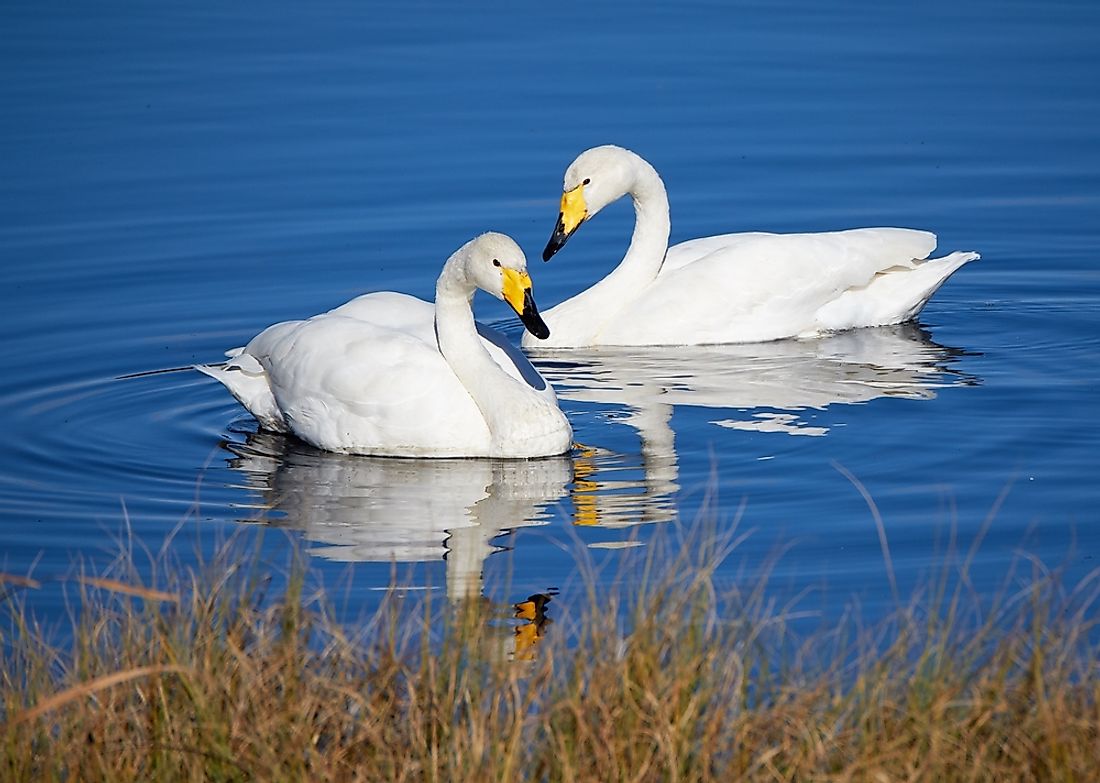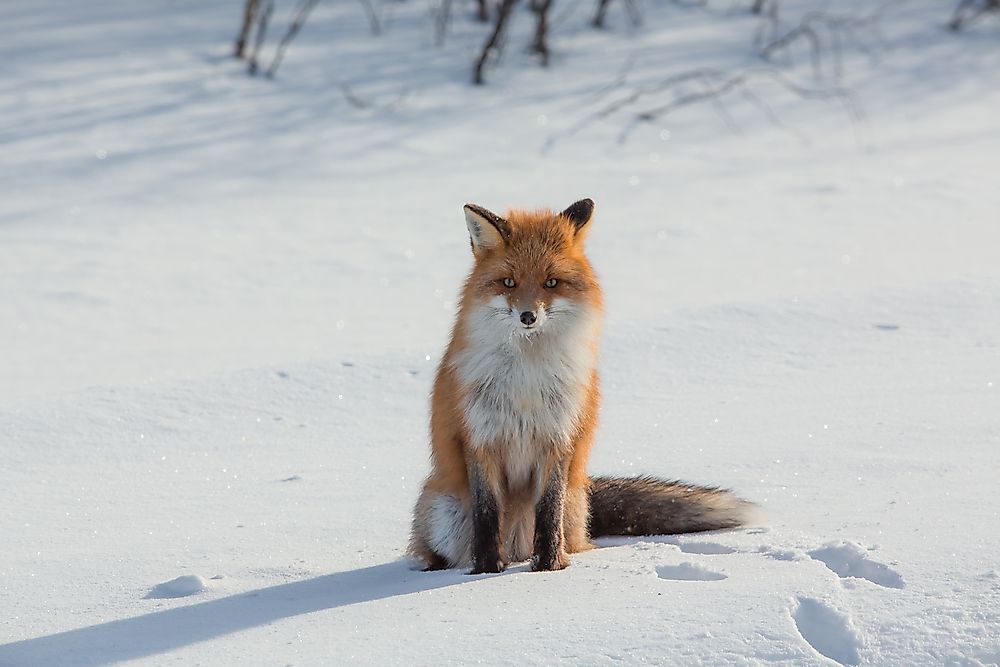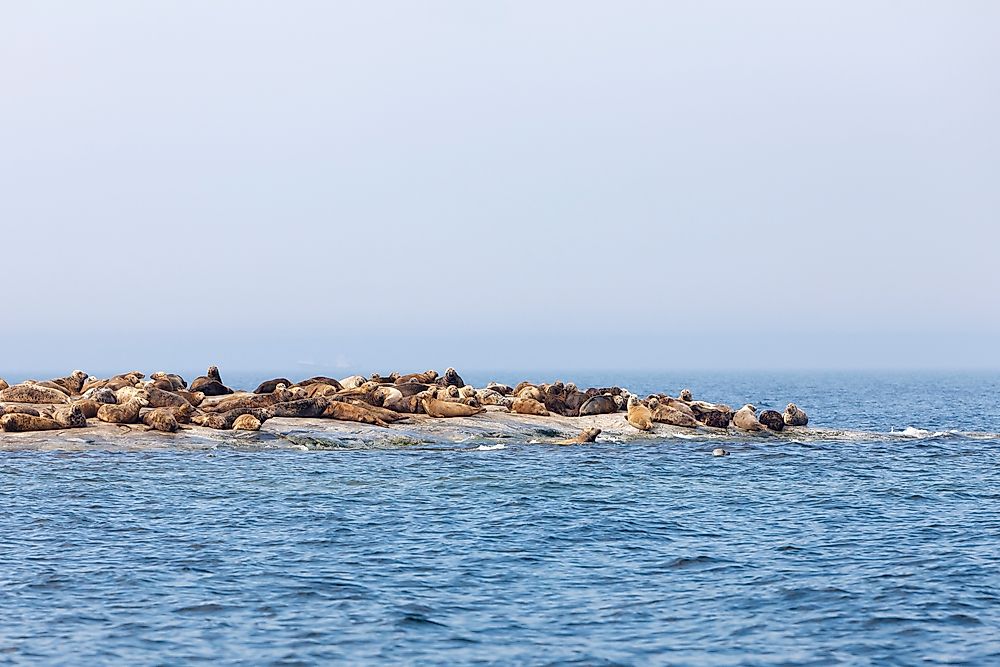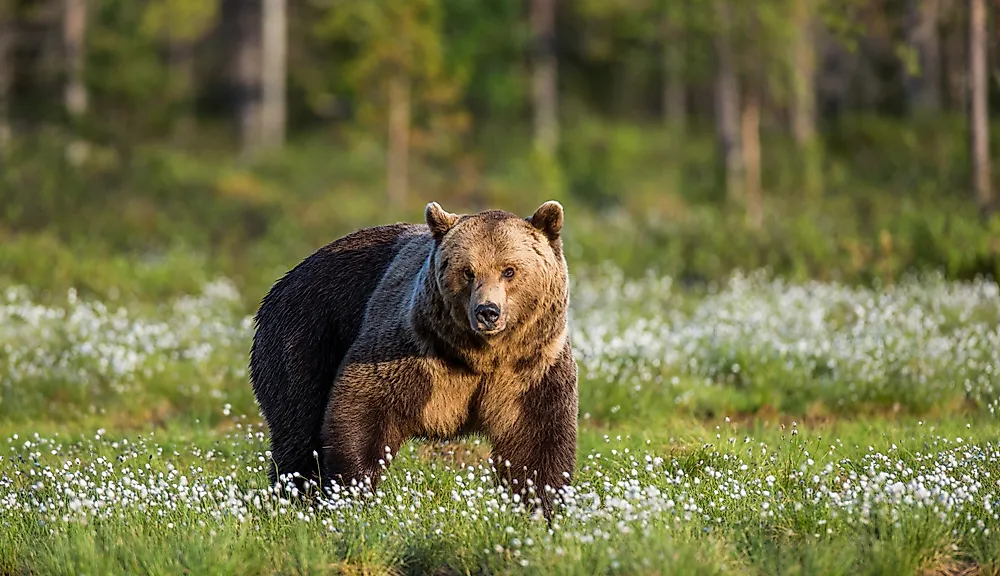Animals Found in Finland

Finland is a Nordic nation which is in the Fennoscandian Peninsula. Finland is bordered by Russia, Sweden, Norway, Gulf of Finland, Gulf of Bothnia and the Baltic Sea. Finland can be subdivided into three ecoregions the Scandinavian Montane grassland and Birch forest, the Sarmatic mixed forest and the Russian and Scandinavian taiga. These ecoregions support Finland’s rich wildlife which includes 11 reptiles and frogs, 70 fish species, 248 breeding bird species, and 60 native mammalian species.
10. Harbour Porpoise
Harbor porpoise is one of the smallest aquatic mammals in the world. It is one of the six porpoise species. Harbor porpoise tends to stay near river estuaries or coastal regions, and therefore it is way more popular than the whale watchers. Although it ventures up-rivers at times, it has been seen swimming hundreds of miles from the sea. An adult harbor porpoise is about 6.2 ft long and the females weigh about 168 pounds while the male can attain a maximum weight of 134 pounds. Its back, tail fin, dorsal fin, and flippers are dark grey, while its underside is whitish with some grey stripes which run along its throat. Their sides are light grey. The average lifespan of these creatures is thirteen years.
9. Arctic Fox

The arctic foxes are a small fox which is indigenous to the arctic areas of the northern hemisphere. They are adapted to the cold environment, and they are famous for their warm, thick fur which they use as camouflage. Their body length ranges from 18 to 27inches plus they have arounded body which helps them preserve body heat. Arctic foxes can live for a maximum of four years, and they tend to prey on smaller creatures like seabirds, waterfowl, fish, voles, and lemmings. Their natural predators are grizzly bears, wolves, wolverines, golden eagles and red fox.
8. Walrus
Walrus are substantial flippered aquatic mammals which are in the subarctic seas and the North Pole. They are divided into three subspecies; Odobenuc rosmarus laptevi, Atlantic walrus, and Pacific Walrus. These creatures weigh over 4,400 pounds and are known for the prominent tusks, bulk, and whiskers. Walrus live in shallow waters right above the continental shelf and are known to spend a lot of time on the sea ice looking for food. Their canines can attain a length of about 3ft 3in and weigh approximately 12 pounds. The tusks in male walruses are thicker and longer. Male walruses uses their tusks to fight each other. Even though they appear bald, walrus has fur. They have a thick and wrinkled skin with a 5.9-inche blubber layer. A young walrus is deep brown, but they grow pale as they mature. The older ones are pink. Walruses can live for a maximum of thirty years in the wild.
7. West European Hedgehog
The West European hedgehog, also known as the European hedgehog or common hedgehog, is native to Europe (Italy and Iberia northwards into the Scandinavian region). They are brownish with over 6,000 white and brown pines covering their bodies. An adult European hedgehog is about 10 inches long and weighs about 4.4 pounds. The male hedgehogs are more significant than the female. They are omnivorous creatures which feed on invertebrates like caterpillars, beetles, earthworms, and slugs among other insects. Their average lifespan is three years, but they can live for up to ten years.
6. Grey seal

The grey seal is a big seal which belongs to the Phocidae family (true seals). The grey seals can be found on the shores of the Northern Atlantic Ocean. The male seals in the eastern Atlantic can attain a maximum weight of 680 pounds and length of 10.8 ft. The seals on the east Atlantic are way larger and weigh about 880 pounds. The female seals are brown to silver grey with some dark patches while the male is darker with lighter patches. The main difference between the grey seals and the harbor seals is their straight head and fewer spots on their bodies. These seals feed on a wide variety of fish like flatfish, skates, cod, and gadids among others.
5. Wolverine
The Wolverine, also known as skunk bear, carcajou or glutton, is the biggest land-dwelling member of the Mustelidae family. It is a muscular and stocky carnivore which resembles a bear more than other mustelids. It has a rounded, broad head, short legs, short rounded ears and small eyes. Even though their legs are short, they are large and have 5-toed paws. They weigh about 71 pounds with a 10.2 inches tail. Their maximum body length is approximately 42 inches. Males are about 30% larger than the female in body size. The male wolverines are twice as heavy as the females. The average lifespan of a wild wolverine is ten years, and the ones in captivity can live for up to seventeen years.
4. Whooper Swan
The Whooper swan is the North Hemisphere swan and the Eurasian counterpart of the trumpeter swan of North America. It resembles the Bewick’s swan in appearance, but it’s larger with a maximum length of about 65 inches and a wingspan of about 108 inches. Their weight ranges from 16 to 31 pounds, and they are considered among the heaviest flying birds in the world. They have a variable bill pattern and a more angular shaped head. They have a black and yellow colored beak. The whooper swan is the national bird in Finland.
3. Brown Bear

The Brown bear is the biggest living terrestrial member of the carnivore order which is only rivaled by the polar bears. They are native to North America and northern Eurasia specifically in the United States, Canada, Central Asia, and Russia among other places. Their shoulder height is about 5 ft while their body-head length can exceed 9 ft. Just like all the other bears they have a short tail which is about 8.7 in long. The average weight of female brown bear is 298 pounds while the males weigh about 400 pounds.
2. European Otter
European otters, also known as Eurasian otters are semi-aquatic mammal which is native to Eurasia. They are native to the coast and waterways of Europe, North Africa, and Asia. These creatures feed mainly on fish, and they are quite strong terrestrially. They are cream and brown. They are long and slender otters which are equipped with aquatic habits. Their head-body length is about 37.5 inches plus a 17.5 inches tail. The adult European otters can attain a maximum weight of 26 pounds.
1. European Mink
The European minks are semi-aquatic mustelid species which are indigenous to Europe. They have the same color as the American minks but are slightly smaller. The European minks are listed as critically endangered. Their numbers started to reduce during the twentieth century, and they are extinct in numerous places. They weigh about 1.76 pounds with the males having a body length of about 16.9 inches and a 7.5 inches tail. The body length of female European minks can reach 15.7 inches with a 7.1 inches tail. They have a diverse diet which is mostly made up of riparian and aquatic fauna.











